 Scientists have revealed huge magnetic toroids in the halo of the Milky Way, which are fundamental for cosmic ray propagation and provide crucially constraint on the physical processes in the interstellar medium and the origin of cosmic magnetic fields.
Scientists have revealed huge magnetic toroids in the halo of the Milky Way, which are fundamental for cosmic ray propagation and provide crucially constraint on the physical processes in the interstellar medium and the origin of cosmic magnetic fields.
May 13th, 2024
Read more
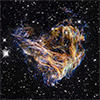 Scientists propose the vr-process as a new source for rare p-nuclei isotopes in the solar system.
Scientists propose the vr-process as a new source for rare p-nuclei isotopes in the solar system.
May 13th, 2024
Read more
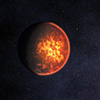 Astrophysicists discovered that an exoplanet is covered with so many active volcanoes that seen from a distance it would take on a fiery, glowing-red hue.
Astrophysicists discovered that an exoplanet is covered with so many active volcanoes that seen from a distance it would take on a fiery, glowing-red hue.
May 10th, 2024
Read more
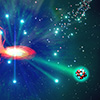 Astronomers have proposed a new theory to explain the origin of phosphorus, one of the elements important for life on Earth. The theory suggests a type of stellar explosion known as ONe novae as a major source of phosphorus.
Astronomers have proposed a new theory to explain the origin of phosphorus, one of the elements important for life on Earth. The theory suggests a type of stellar explosion known as ONe novae as a major source of phosphorus.
May 10th, 2024
Read more
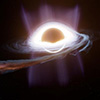 A recent study has discovered a novel method for detecting the first-generations stars, known as Population III (Pop III) stars, which have never been directly detected.
A recent study has discovered a novel method for detecting the first-generations stars, known as Population III (Pop III) stars, which have never been directly detected.
May 9th, 2024
Read more
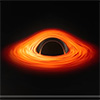 Ever wonder what happens when you fall into a black hole? Now, thanks to a new, immersive visualization produced on a NASA supercomputer, viewers can plunge into the event horizon, a black hole's point of no return.
Ever wonder what happens when you fall into a black hole? Now, thanks to a new, immersive visualization produced on a NASA supercomputer, viewers can plunge into the event horizon, a black hole's point of no return.
May 9th, 2024
Read more
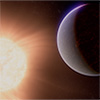 Researchers using the James Webb Space Telescope may have detected atmospheric gases surrounding 55 Cancri e, a hot rocky exoplanet 41 light-years from Earth. This is the best evidence to date for the existence of any rocky planet atmosphere outside our solar system.
Researchers using the James Webb Space Telescope may have detected atmospheric gases surrounding 55 Cancri e, a hot rocky exoplanet 41 light-years from Earth. This is the best evidence to date for the existence of any rocky planet atmosphere outside our solar system.
May 8th, 2024
Read more
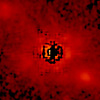 The observations suggest some of earliest 'monster' black holes grew from massive cosmic seeds.
The observations suggest some of earliest 'monster' black holes grew from massive cosmic seeds.
May 6th, 2024
Read more
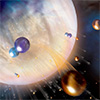 Planetary scientists have discovered how Venus, Earth's scalding and uninhabitable neighbor, became so dry.
Planetary scientists have discovered how Venus, Earth's scalding and uninhabitable neighbor, became so dry.
May 6th, 2024
Read more
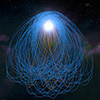 Scientists believe they have found a reason why white dwarfs eat their nearby planetesimals.
Scientists believe they have found a reason why white dwarfs eat their nearby planetesimals.
May 3rd, 2024
Read more
 Scientists have discovered a potential 'cosmic glitch' in the universe's gravity, explaining its strange behavior on a cosmic scale.
Scientists have discovered a potential 'cosmic glitch' in the universe's gravity, explaining its strange behavior on a cosmic scale.
May 1st, 2024
Read more
 Manganese-rich sandstones indicate there were once habitable conditions in the Gale Crater.
Manganese-rich sandstones indicate there were once habitable conditions in the Gale Crater.
May 1st, 2024
Read more
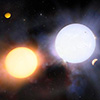 Astronomers confirm that differences in the chemical composition of binary stars can be traced back to the earliest stages of their formation.
Astronomers confirm that differences in the chemical composition of binary stars can be traced back to the earliest stages of their formation.
Apr 29th, 2024
Read more
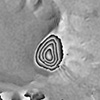 Samples reveal evidence of changes experienced by the surface of asteroid Ryugu, some probably due to micrometeoroid bombardment.
Samples reveal evidence of changes experienced by the surface of asteroid Ryugu, some probably due to micrometeoroid bombardment.
Apr 29th, 2024
Read more
 Alerts can now be sent less than 30 seconds after detection.
Alerts can now be sent less than 30 seconds after detection.
Apr 26th, 2024
Read more
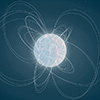 Astronomers detected a giant eruption coming from a magnetar, an extremely magnetic neutron star.
Astronomers detected a giant eruption coming from a magnetar, an extremely magnetic neutron star.
Apr 24th, 2024
Read more
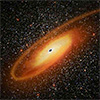 A new study shows the intricate processes governing when and where black holes slow down and interact with each other, potentially leading to mergers.
A new study shows the intricate processes governing when and where black holes slow down and interact with each other, potentially leading to mergers.
Apr 24th, 2024
Read more
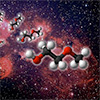 Such discoveries help researchers better understand the development of molecular complexity in space during star formation.
Such discoveries help researchers better understand the development of molecular complexity in space during star formation.
Apr 23rd, 2024
Read more
 Scientists have revealed huge magnetic toroids in the halo of the Milky Way, which are fundamental for cosmic ray propagation and provide crucially constraint on the physical processes in the interstellar medium and the origin of cosmic magnetic fields.
Scientists have revealed huge magnetic toroids in the halo of the Milky Way, which are fundamental for cosmic ray propagation and provide crucially constraint on the physical processes in the interstellar medium and the origin of cosmic magnetic fields.
 Subscribe to our Space Exploration News feed
Subscribe to our Space Exploration News feed















